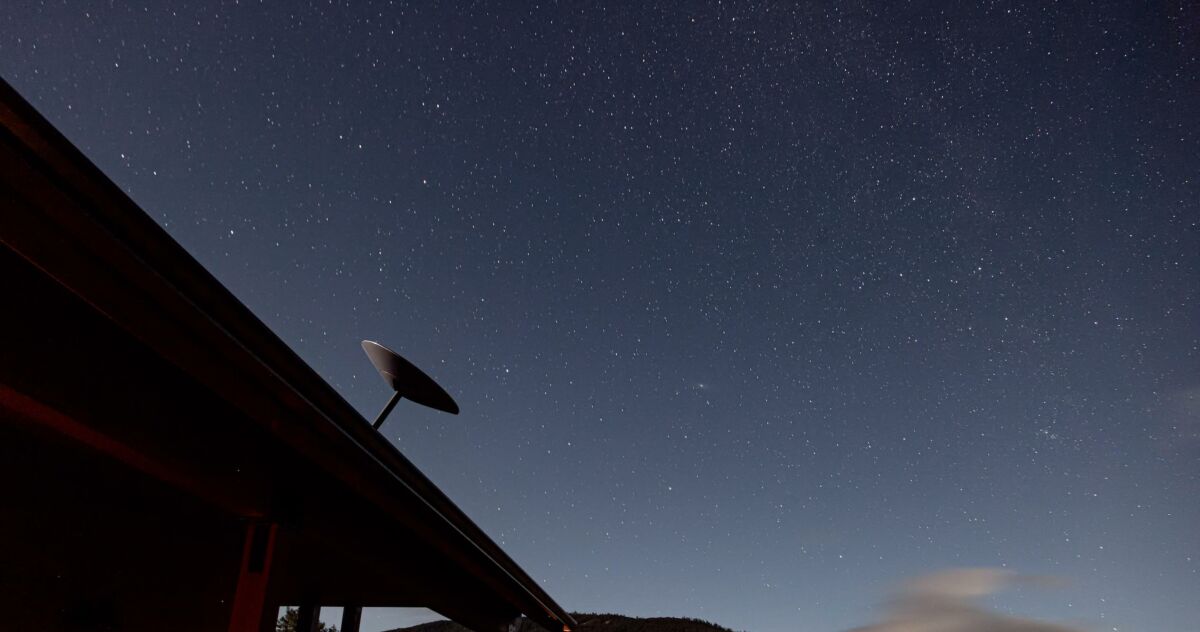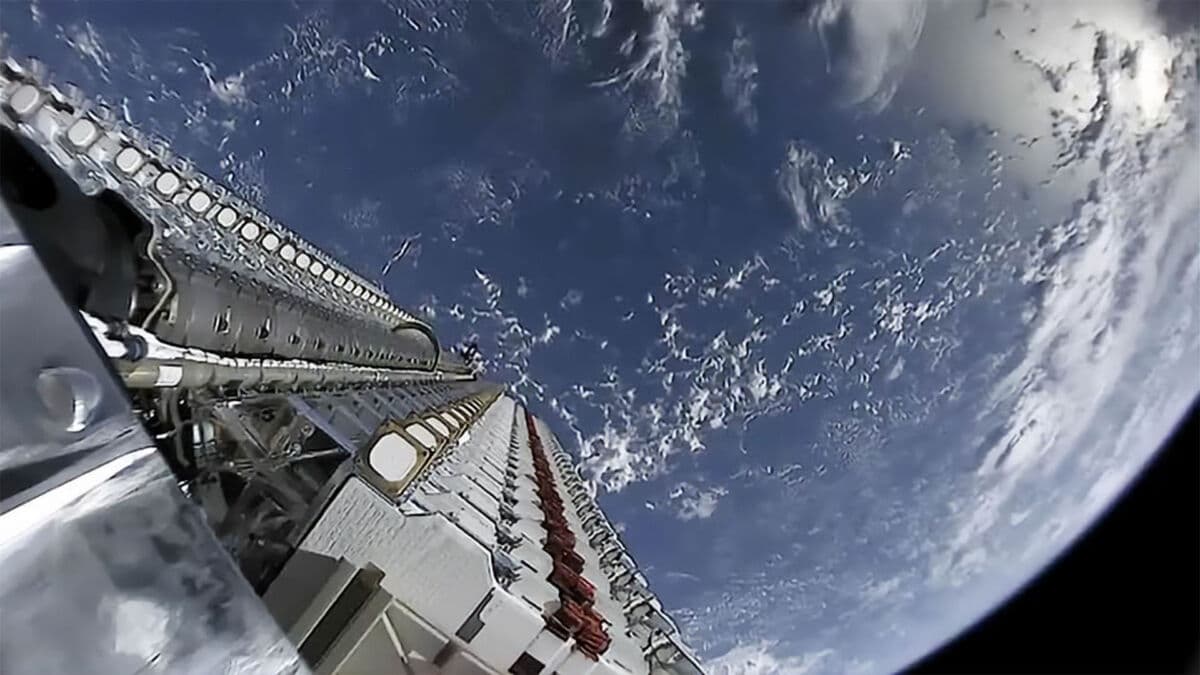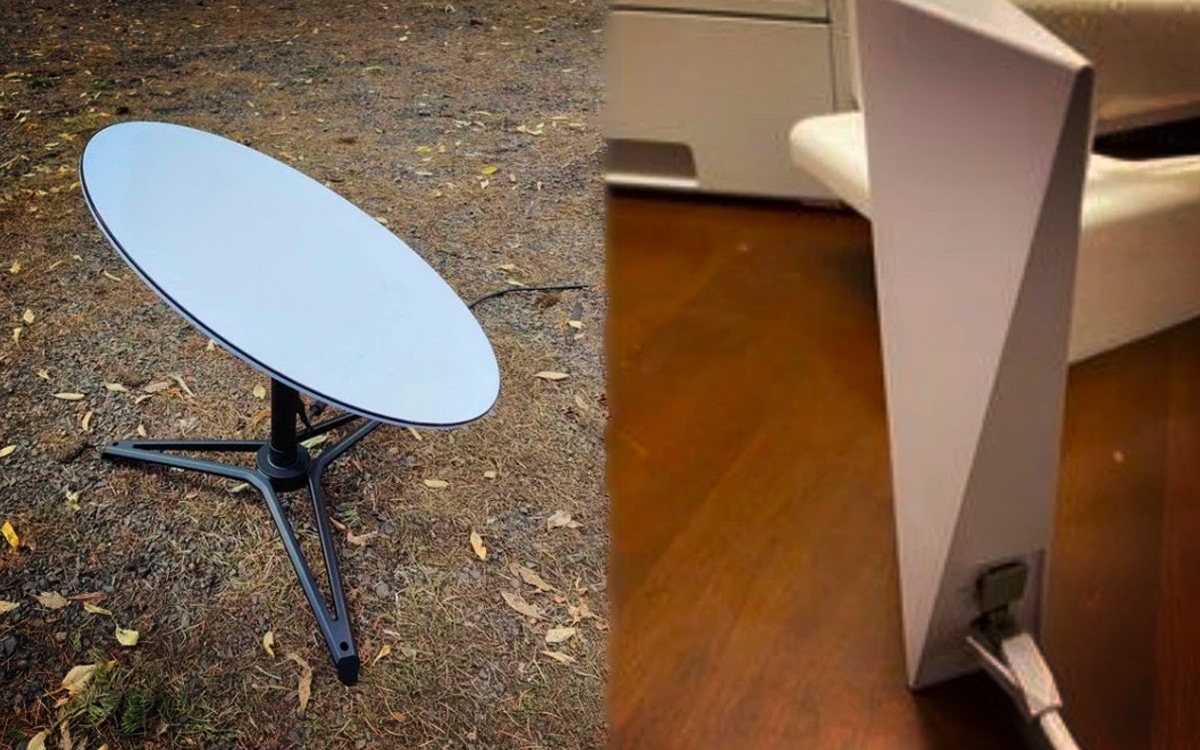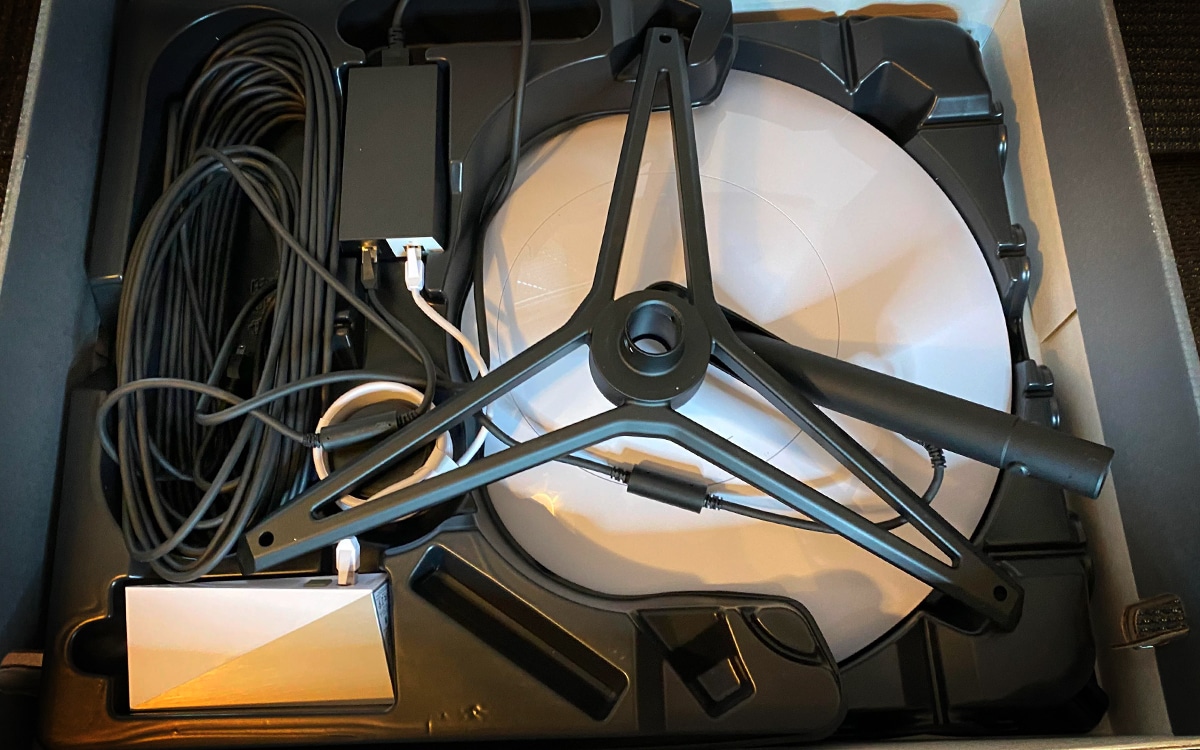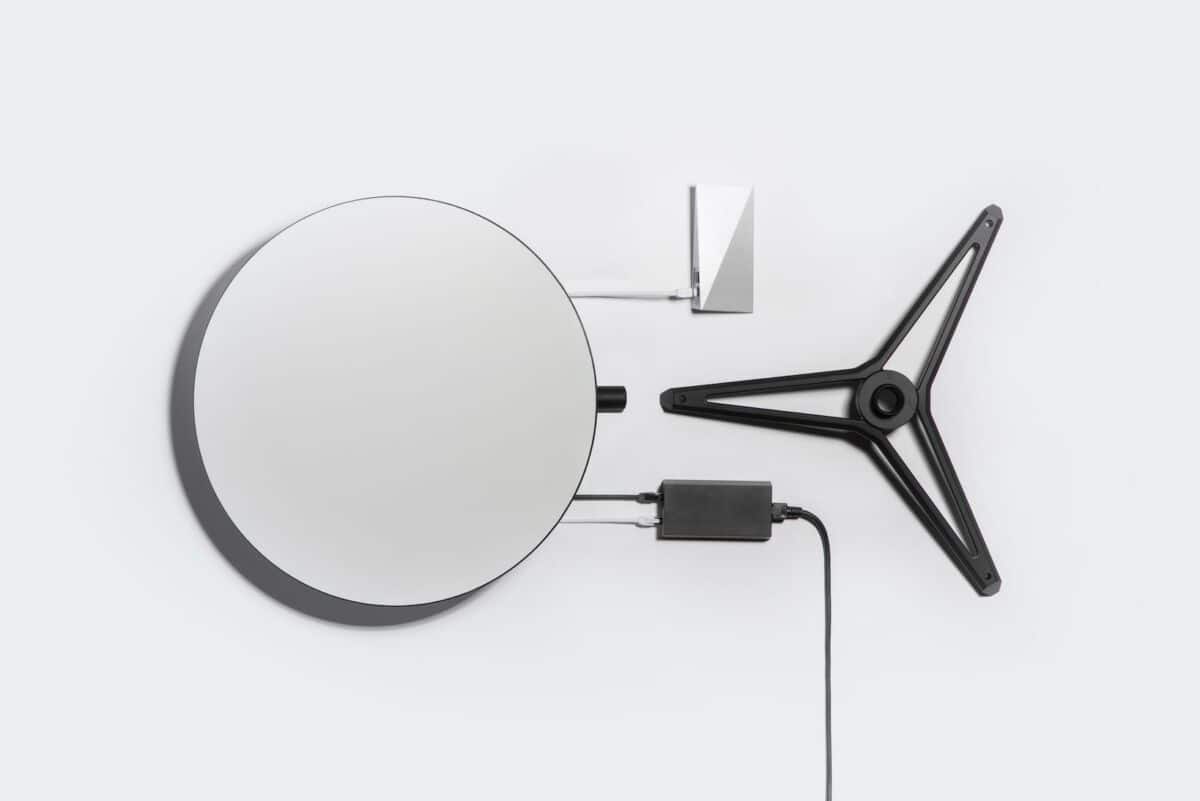Starlink, very high-speed internet access by satellite, is available in beta in the United States and has just obtained the necessary authorizations to launch in France. Date, price, speed, operation… we take stock of this file!
Starlink is one of those projects that is in danger of revolutionizing internet access around the world. The aim is to deliver an Internet access offer that is relatively affordable intended for areas that are inaccessible, poorly served, or simply too outlying to have internet access worthy of the name.
When will Starlink be available in France?
After a beta phase in the United States. Starlink has obtained the essential authorizations from Arcep, and the service has been available in France since May 10, 2021. The kit is displayed at a price of €499 to which €59 will have to be added for shipping and handling costs, then a monthly subscription of €99 per month. Or an envelope of €657 for your first month at Starlink.
Unfortunately for us, various environmental associations have managed to bend justice in their favor to deprive SpaceX of its radio frequencies. Indeed, Priartem and Agir denounced in particular the precipitation of Arcep, which would not have carried out a ” public consultation before giving the green light to the company. The court decision now prohibits SpaceX from using the frequencies it had acquired, and therefore from offering its satellite Internet service in France.
Note that Elon Musk presented a premium formula of Starlink at 500 Mb / s, at an astronomical price on the other hand. A subscription of 500 dollars per month is requested, while it will be necessary to pay a deposit of 2500 dollars for the material. Still regarding prices, be aware that Elon Musk has just announced a price increase in March 2022 due to the shortage of components. The price of the kit in the USA will for example go to 549 dollars instead of 499 dollars. As for the monthly subscription, the bill will increase to 110 dollars instead of 99. It is not yet known whether this new pricing policy will apply in France.
You should also know that the European Union is interested in the idea of launching its Internet network by satellite. By acquiring its own constellations of satellites, the EU intends to secure the Internet network and communications of European countries, and to maintain them in the event of major cyberattacks. According to the statements of the European Commission, the first devices would be put into orbit in 2024.
Is Starlink fast (bandwidth, latency)?
The Starlink constellation is under construction. But, as the number of satellites increases, so does the constellation capacity.
The first independent speed tests conducted in North America show that bandwidth averages around 150 Mbps descendants. Others report similar, albeit lower, numbers. On average, we can expect a throughput between 50 and 150 Mbps. That said, Elon Musk promises that in the coming months the average speed will be doubled to 300 Mbps with a latency of around 20 ms.
In March 2022, the latest speed readings confirmed Starlink’s ambitions: the service exceeded 120 Mbits/s in France, which is better than fixed Internet! In France, the average is around 90 Mbit/s. Note that Starlink currently exceeds 100 Mbit/s in 15 countries, proof of the effectiveness of the service in different places around the globe.
Originally, Elon Musk presented Starlink as a service that would eventually allow download speeds of up to 1 Gbps. However, it seems that Starlink has since revised its objectives upwards, and plans to eventually deliver a 10 Gbps internet connectionor as much as the fastest consumer Internet access by fibre.
Starlink is the first satellite constellation to have theambition to deliver very high-speed Internet access with very low latency across the entire surface of the globe. For this SpaceX must put into orbit approximately 12,000 satellites in low orbit by 2025. In total, counting the 1015 satellites already deployed by Starlink, there are today only 2000 satellites in activity around the Earth.
And we do not count the authorization to launch several tens of thousands of additional satellites. Until now, the only satellites delivering internet access were placed in geostationary orbit at an altitude of 36,000 km. This has the advantage of being able to cover a large area with just one satellite. But this also has the disadvantage of necessarily causing high latency (> 600 ms) due to its very high altitude while limiting the capacities of the infrastructure.
To avoid this, Starlink prefers to place a large number of satellites in orbit very close to the Earth. A first fleet of satellites (7,500 eventually) is thus planned at an altitude of 340 km. 1,600 satellites must be placed at an altitude of 550 km. At last. 2800 satellites must be placed at an altitude of 1150 km. A given user’s Internet connection is ensured by a succession of satellites traveling at a high frequency.
To ensure the coordination made necessary by this scrolling, the satellites will communicate with each other by laser link. Communication with base stations and clients is done through a system of so-called phased array antennas. These can direct the signal without moving parts. A motor in the customer’s dish nevertheless assists the orientation of the antenna for a better signal.
What equipment do I need to connect?
Starlink customers receive a extremely simple installation kit. It consists of a motorized dish with phased array antennas, a long Ethernet cable with PoE, a power brick that also serves as a PoE injector and a kind of switch. As well as a triangular shaped router.
All of these elements arrive already plugged in for simplicity. The instructions are quite simple: place the dish outside, on the ground or on your roof – so that it has a clear view of the sky. Open your smartphone, connect to the hardware and follow the instructions. The connection is established in seconds.
This kit is not free – it is billed at $499.
Does Starlink work in town?
On paper, nothing a priori prevents Starlink from operating in town. However, this technology is generally unsuitable for dense areas, while it is ideal in sparsely populated or rural areas. The reason is simple: because they are closer to the ground, each of the constellation’s satellites covers a fairly small area.
However, in cities, this can potentially lead customers to saturate their satellite cell. Moreover, Starlink’s rate is currently significantly higher than the cost of fiber internet access. So we can say without getting too wet that‘there will be no question of subscribing to Starlink if you live in town. Note, however, that Tesla, another company of Elon Musk, has started the deployment of Starlink dishes in its Supercharger stations, in order to help motorists pass the time during recharging.
Note also that the help pages specify that you won’t really be able to move your Starlink installation to another address. In any case if the latter is outside your usual satellite “cell”. The delivery of internet access is indeed a kind of synchronized and coordinated dance of satellites which appear and disappear in front of the antenna every second.
If you leave this cell, you will not be in the right place to receive internet from one of the satellites programmed to serve you. You will no longer have access to the service.. This therefore means for those who are considering subscribe in their second home to enjoy it in town that unfortunately will not work.
Starlink emphasizes that this is a matter of geometry, not a voluntary restriction. Even if de facto, this seems to suit the service well since, as we explained above, Starlink is not suitable for heavily populated areas.
Also read: Starlink – satellite internet access will allow latency-free streaming of video games
Is the internet connection via Starlink weather sensitive?
The various tests are beginning to be sufficiently numerous for it to be possible to say that Starlink is relatively insensitive to weather. Speed may drop slightly in the event of heavy rain, snow, strong winds, and other weather events, but nothing, normally, that does not become prohibitive.
Besides the Starlink antenna can detect snow. A specific mode is then activated to melt it, to clear the view to the sky as much as possible, which strengthens its resilience to the elements. Starlink nevertheless notes in its help pages thatin the event of heavy snowfall, it will be necessary to ensure that the snow has not accumulated too much around the dish.
What is Starlink’s coverage map?
For now, as Elon Musk revealed a few months ago, Starlink is technically only functional on “high latitudes”, ie the northern United States and Canada, or Central Europe and Northern Europe on this side of the Atlantic. Over time, Starlink will become available closer and closer to the equator, until we can truly speak of planetary coverage.
But if we explore precisely this fascinating subject that is the cover of Starlink, it is also necessary to take into account its kinetic aspect. Unlike 5G antennas which are fixed, and whose coverage can be plotted on a map, the constellation of Starlink satellites is in perpetual motion. This interactive map gives a very detailed idea of the coverage everywhere in the world at a given time:

